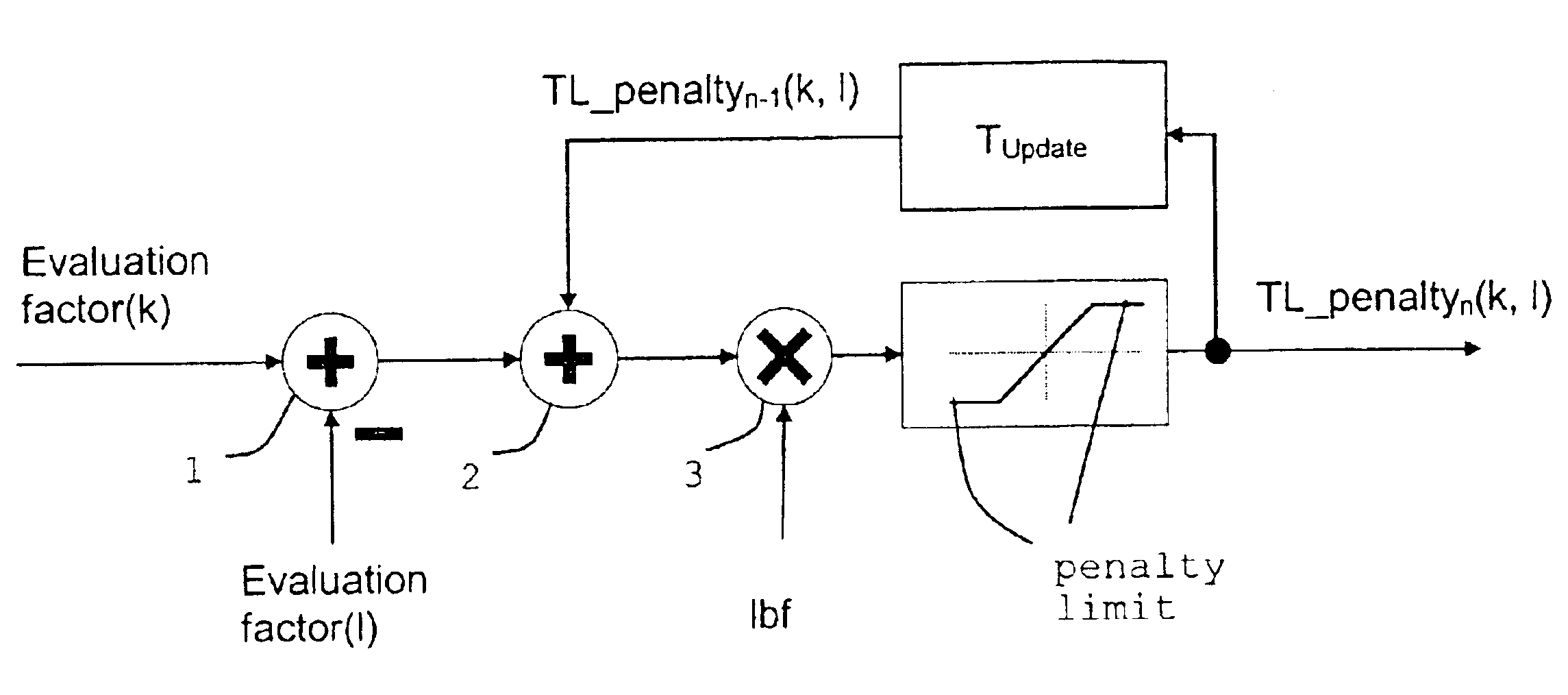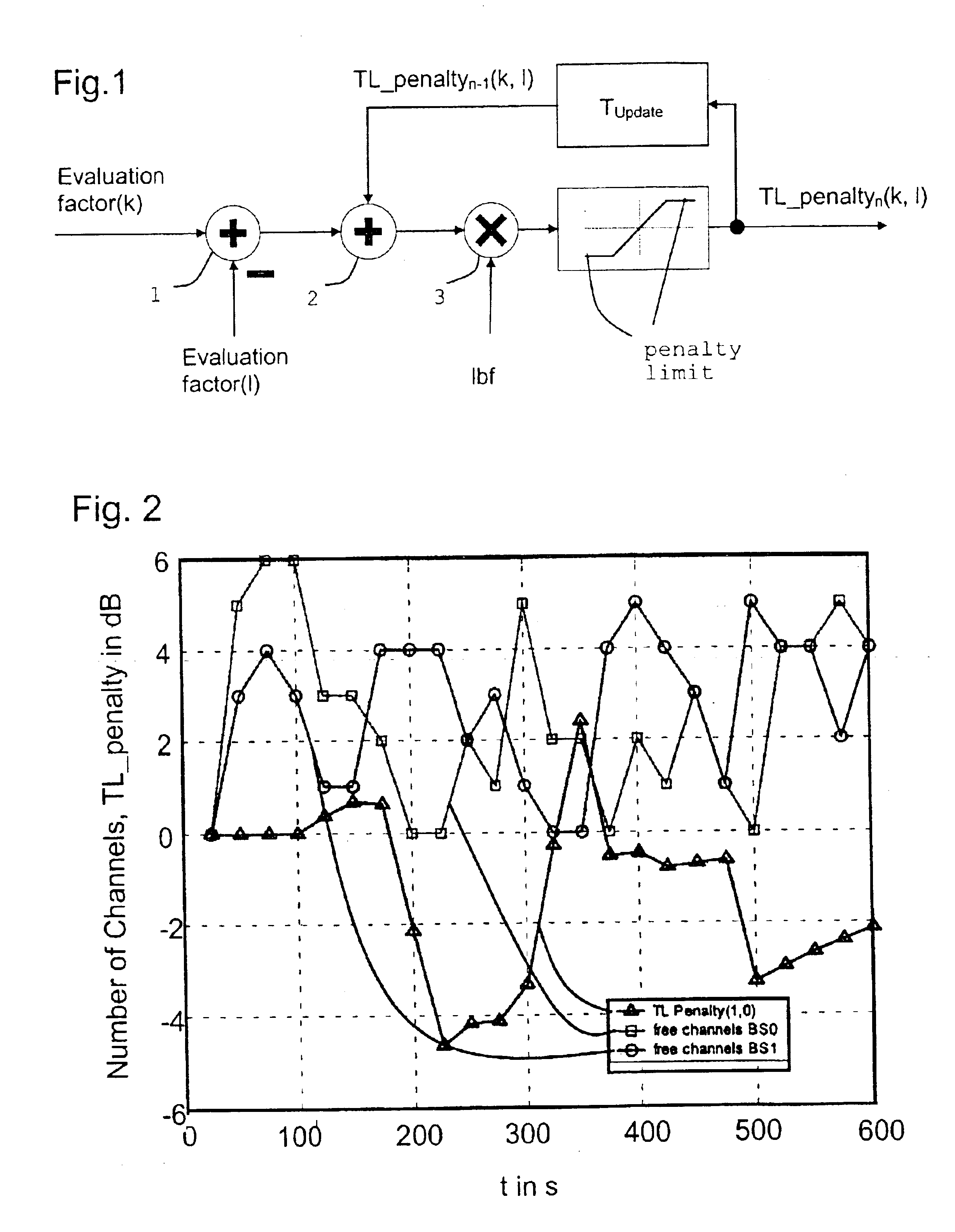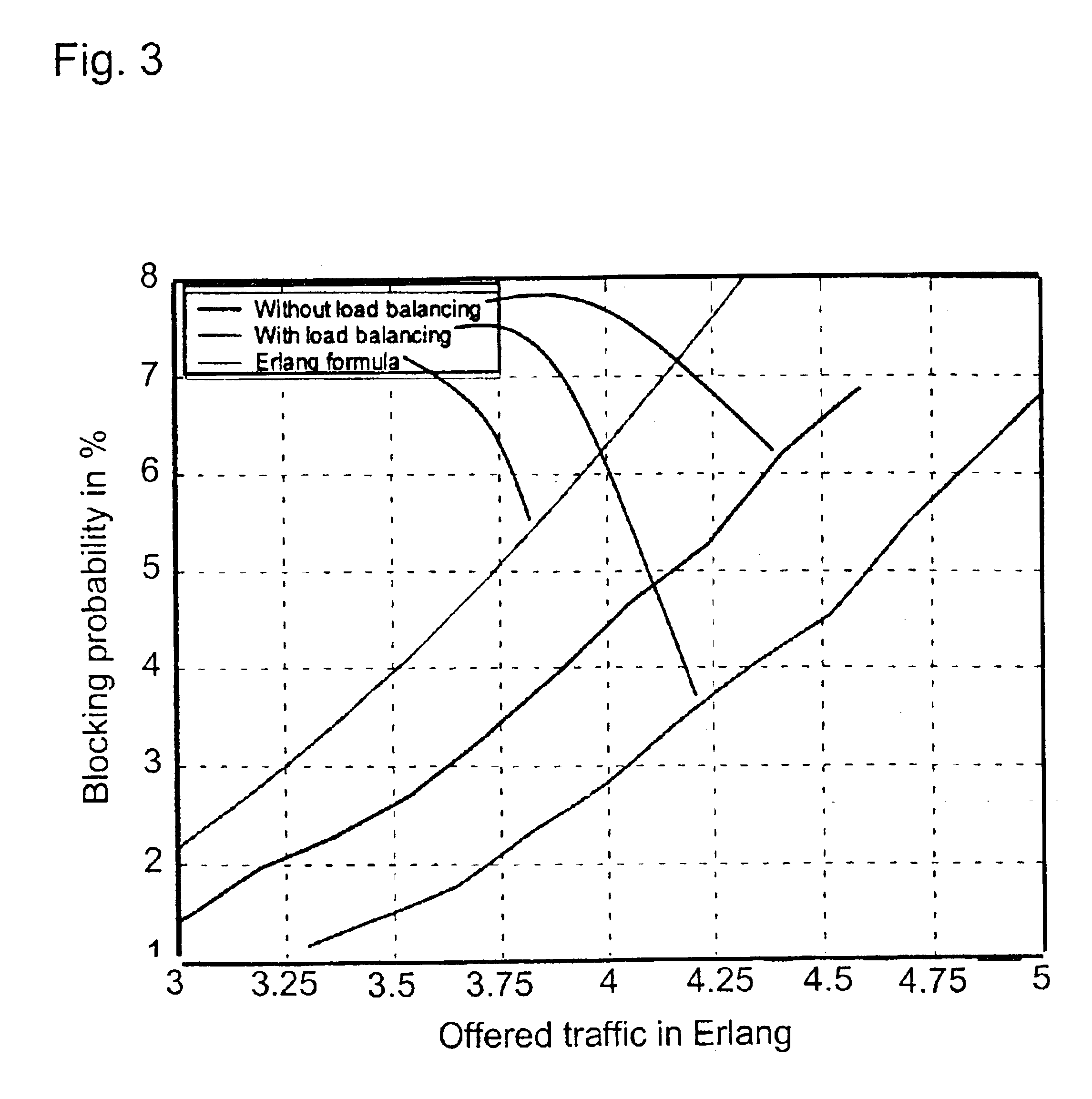Method for communication traffic load balancing between cells of a communication system
a communication system and traffic load technology, applied in the direction of transmission, transmission monitoring, electrical equipment, etc., can solve the problems of not being able to acquire or install, needing to allocate new bandwidth, and increasing the number of cells, so as to prevent the rapid variation of the cell size, and reduce the cost of installation.
- Summary
- Abstract
- Description
- Claims
- Application Information
AI Technical Summary
Benefits of technology
Problems solved by technology
Method used
Image
Examples
Embodiment Construction
[0024]According to the invention, first a universal mapping function fMap(Nfree) is introduced to map the traffic load into an evaluation factor or correction factor for the modified power budget handover. While the traffic load is measured in terms of the number of free traffic channels Nfree, the evaluation or correction factor C applied to the power budget calculation for the handover threshold comparison and target cell ranking, which, will be explained in more detail below, is defined in units of dB. Thus the mapping functionality is given by
C=fMap(Nfree).
[0025]The mapping function is discrete and has to be a monotonic decreasing function. Moreover, if no traffic channel is free, Nfree=0, a maximum correction factor C=Cmax has to be assigned. Otherwise, if all available traffic channels are free Nfree=Nch, the correction factor has to be set to Cn, Cn=0 for simplicity. The term Nch denotes the total number of channels in the cell.
[0026]A possible solution to determine the corre...
PUM
 Login to View More
Login to View More Abstract
Description
Claims
Application Information
 Login to View More
Login to View More - R&D
- Intellectual Property
- Life Sciences
- Materials
- Tech Scout
- Unparalleled Data Quality
- Higher Quality Content
- 60% Fewer Hallucinations
Browse by: Latest US Patents, China's latest patents, Technical Efficacy Thesaurus, Application Domain, Technology Topic, Popular Technical Reports.
© 2025 PatSnap. All rights reserved.Legal|Privacy policy|Modern Slavery Act Transparency Statement|Sitemap|About US| Contact US: help@patsnap.com



